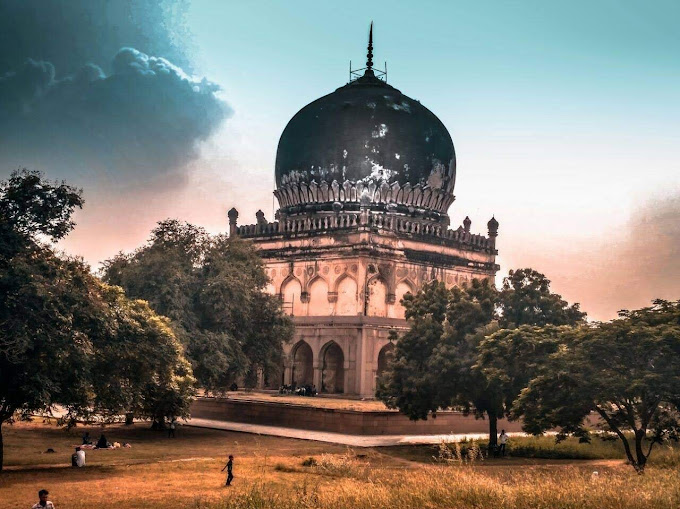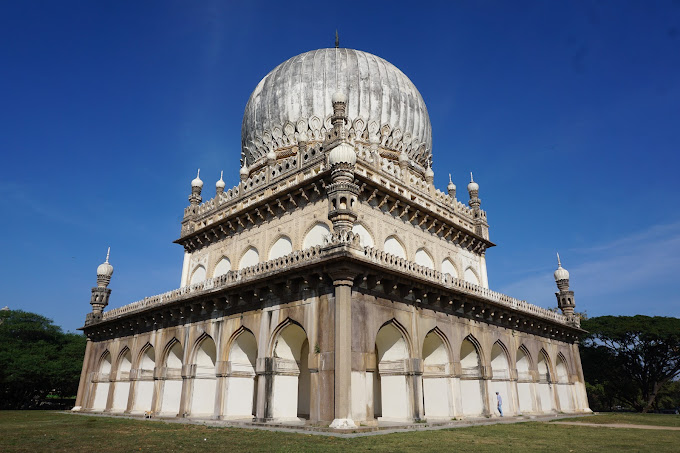
The Qutb Shahi Tombs, commonly referred to as the Seven Tombs, are an architectural marvel and a significant historical site located in Hyderabad, India. These tombs are the final resting place of the rulers of the Qutb Shahi dynasty, who reigned over the region during the 16th and 17th centuries.
The tombs are known for their unique blend of Persian, Pashtun, and Hindu architectural styles, reflecting the diverse cultural influences of the period. Each tomb is intricately adorned with intricate carvings, domes, arches, and minarets, showcasing the artistic prowess of the craftsmen of that era.
The most prominent tomb among the seven is that of Muhammad Quli Qutb Shah, the founder of Hyderabad and the fifth ruler of the Qutb Shahi dynasty. His tomb is particularly notable for its grandeur and architectural splendor.
Apart from the rulers’ tombs, the complex also houses the tombs of other members of the royal family, including queens, princesses, and courtiers. The serene gardens surrounding the tombs add to the tranquil ambiance of the site, making it a peaceful retreat for visitors amidst the bustling city.
The Qutb Shahi Tombs stand as a testament to the architectural brilliance and cultural heritage of Hyderabad’s past. They are not only a popular tourist attraction but also a symbol of the city’s rich history and the legacy of the Qutb Shahi dynasty.
These majestic structures, which have defied the ravages of time and weather, were built in remembrance of the Golconda rulers who have passed away.

The Qutub Shahi Tombs stand as the most reliable evidence of the Qutub Shahi dynasty’s architectural traditions. These exquisite structures feature intricate arches, columns, domes, minarets, and galleries, surrounded by the lush Ibrahim Bagh gardens. The complex houses seven tombs dedicated to the former Golconda kings. Each tomb is a dome-like structure built on a square base, further surrounded by pointed arches. The tombs range in height from 9 to 15 meters, with the smaller ones being single-story and the larger ones two-story. Originally, the domes were covered in vibrant blue and green tiles, though only a few remnants remain today. Enchanting minarets and a magnificent 42.5-meter-tall domed tomb add to the complex’s splendor. The tombs were once furnished with chandeliers and soft canopies on silver poles, serving as the grand mausoleums of the Golconda Sultans. During the Qutub Shahi era, the tombs were considered sanctuaries, with criminals seeking refuge there granted pardons. After the dynasty’s decline, the tombs fell into neglect until the early 19th century, when Salar Jung III initiated restoration efforts. Today, the Department of Tourism maintains the site, preserving its heritage and making it a popular destination for visitors to Hyderabad and the Golconda Fort.